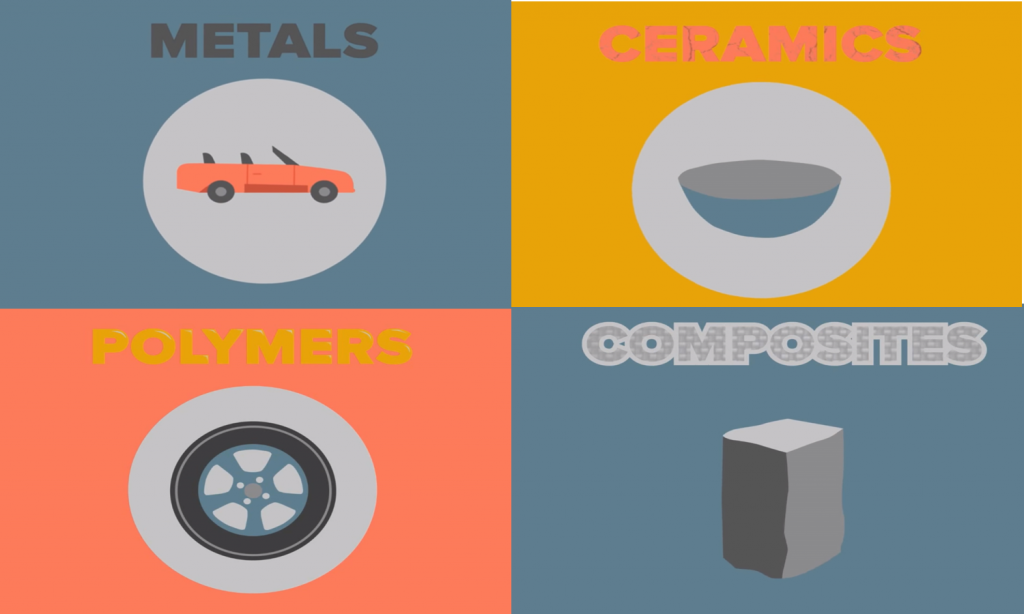Guest post by www.MetallurgyData.com
This is the first in a series of blogs titled Metallurgy for the Non-Metallurgist, in this first blog we will look at materials.
Engineering materials can be divided in to 4 key areas, Metals, Polymers, Composites and Ceramics.
Metals – Metals are the widest used of the four materials. Even if a material is not made of metal, metal will have been used at some point during its manufacture.
Metals can be divided into two sub groups; ferrous and non-ferrous. In ferrous metals the main constituent is iron and this group consists of steels and cast irons. Considering the amount of strength that is achievable in steel and cast irons, it is a cheap material. This is because iron is one of the most plentiful elements in the earth’s crust.
Non-ferrous metals include any other metals, some examples include aluminum, copper, zinc, titanium, and nickel.
Metals can be strengthened by adding more than one metal together such as copper and tin to make bronze. In this example the two combined have far greater strength than each of the individual metals (the sum is greater than the parts). We can also change the properties of metals by adding non-metallic elements like carbon.
When we produce steel we use the same principle as bronze, we take one element iron, which is the bulk of all steels and add another chemical element (alloying addition), these could include carbon, manganese, nickel, copper, molybdenum, boron, chromium, niobium, titanium, vanadium. In this way we can tailor a steel to a specific application.
When we add alloying additions to the metal it distorts the atomic structure, this makes it more difficult for the atoms to move around and makes the metal stronger. Depending on the type and amount of an alloying element we can make a metal much stronger.
Polymers – Polymers are widely used in many different industries and can be natural (wool, silk, natural rubber) or synthetic (synthetic rubber, nylon, polystyrene).
Plastics are probably the most used polymer and are made up from hydrogen and carbon (hydrocarbons). These are a by-product from the petroleum industry and due to this they are an abundant, and therefore a cheap material.
The carbon and hydrogen which make up the plastics are the key to how they work, because these can form together to produce long chains, this enables plastics to be versatile and easily processed.
Composites – A composite is a combination of two or more materials and consists of a binder and a reinforcement. They have been used for centuries in the form of concrete, and in Roman text from 25BC different aggregates are discussed for use in lime mortars. In 1853 steel bars were first added to concrete making one of our widest used composites: reinforced concrete. In concrete, cement is the matrix and the stone or aggregate is the reinforcement. The other main composites are fibre glass and carbon fibre.
Ceramics – Ceramics have been used for thousands of years and the most common two are glass and clay. Clay was the first material that we learnt to transform into another state using fire. This was done about 29000 years ago when clay was formed into decorative figures. Much later clay was used to form items like jugs and bowls.
Glass which is mainly made from sand, was mastered by the Romans who unlocked the secret of blown glass by mixing it with minerals. The Romans were the first people to use glass for windows.
MetallurgyData.com have produced an ‘Introduction to materials’ Video – to view this free video visit – http://www.metallurgydata.com/index.php/metallurgy-for-non-metallurgists-2/introduction-to-materials/
The next series in this blog will be ‘Steel metallurgy’.






